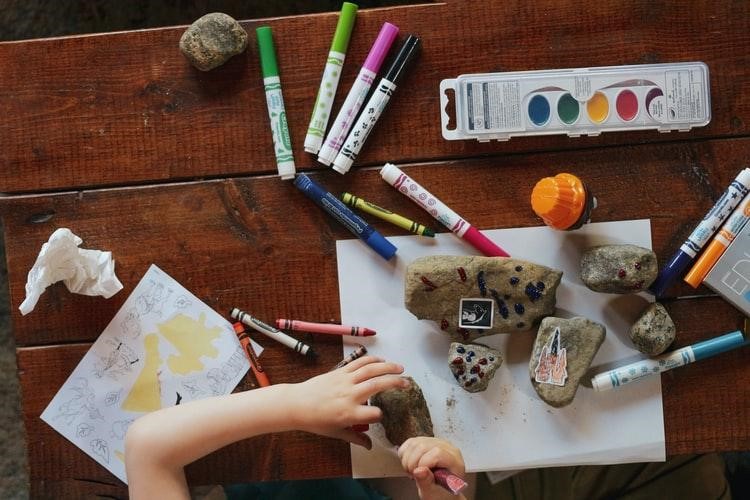How To Teach Your Children To Be Assertive | Benefits & Assertiveness Activities For Kids

Childhood, one of the most impressionable times in an individual’s life. An age where a child models their personality, grows emotionally, and learns basic communication styles. Teaching children to be assertive ensures they grow into respectable, empathetic, and confident individuals.
The ability to react using common sense and not violence or aggression is what being assertive means. An important skill to teach your kid, assertiveness not only ensures their personality development but also makes sure, your child develops a positive attitude.
Assertiveness is a skill that is halfway between passiveness and aggression. An assertive child is someone who is not a pushover yet cares about others’ views and who is confident yet not overly confident or aggressive in their opinions.
Being Aggressive vs Being Assertive

Many a time, assertiveness can be confused with aggressiveness as both communication styles require a person to stand their ground and speak for themselves. Assertive behavior often comes off as being in control.
Nevertheless, there is a huge difference between being assertive and being aggressive. Being assertive requires an individual to be confident and direct but not rude or offensive.
Being assertive means you respect others’ ideas, views, and opinions. Being able to listen and heed constructive criticism, and willing to listen to others.
Traits of assertive children can include:
- Identifying their feelings and emotions
- Speaking for themselves and standing up for others
- Avoiding bullying others
- Disagreeing respectfully
- Willing to negotiate with others
- Saying “no” when required
- Not feeling guilty for standing up to themselves or others
- Building strong and meaningful relationships
- Having healthy self-esteem and confidence
- Feeling in control
Benefits Of Teaching Children Assertiveness
Assertiveness is a skill that molds children into an environment that accepts responsibility and encourages them to explore their skills and talent better. This communication style empowers them to become independent and allows them to express their emotions healthily.
Teaching assertiveness to children can also help them:
- Effectively communicate with others
- Defend their rights as well as those of others
- Not easily influenced by others
- Be respectful but not entirely aggressive or passive
- Be able to politely and respectfully say “no”
- Be able to listen to others opinions and respect them
- Avoid manipulating others
- Become self-aware
- Foster emotional intelligence and balance
- Promote self-regulation
How To Teach Children To Be Assertive?
Now that you’re aware of the benefits of teaching children assertiveness, let’s see how you can teach your child to be assertive:
1. Talk About Boundaries
Talk about boundaries is important when it comes to teaching children assertiveness. Let your child understand that boundaries are important and are to be respected. Talk about physical boundaries, emotional boundaries, etc.
Lack of understanding when it comes to boundaries can, in the future, lead to relationship issues, social issues, etc. Every individual, a child or an adult, has a right to respect their boundaries.
Children taught the value of boundaries often grow up to be assertive and successful individuals.
2. Let Them Express Their Emotions
Children need a safe, non-judgmental environment to express their emotions and feelings openly. As a parent and guardian, you can offer them space and let them express their emotions as they are.
Talk to them about their worries and problems without making them feel bad about their worries. Having a comfortable environment to being able to talk about their feelings and emotions can help your child become a better communicator as well.
3. Encourage Team Building
Team building exercises are one of the best ways to build assertiveness, self-esteem, and confidence in children. When a child learns how to work alongside a team, they learn skills such as compromise, cooperation, and communication.
This exercise can also help a child learn the difference between assertiveness and aggressiveness. Working with others toward achieving a common goal can make them understand the value of teamwork too.
5. Teach Them The Power Of “NO”
Many people, including children, face difficulty in saying “no” when it means hurting someone’s feelings. Children, as I said, are impressionable. They should learn the value of voicing their ideas and opinions even if it means disagreeing with others.
If your child doesn’t want to do something and says “no”, make sure they don’t feel guilty about it. Teaching your child to be assertive means teaching them not to be passive pushovers but independent individuals.
6. Set Good Examples
There is probably no better way to teach your child to be assertive than setting a live example. The way you interact with others sticks with your child. If you’re aggressive toward someone, even a stranger, then they’ll adopt the same behavior.
Make sure when you’re talking to someone, you’re polite and respectful. Model assertiveness and your child will adopt that. Hold on to your boundaries, say “no” when needed, apologize where required.
Fun Assertiveness Training Activities For Kids

Here are some fun activities you can engage in with your kids to teach them assertiveness:
1. Role Play
Role-playing using hand puppets, sock puppets, etc is also an amazing way to teach your child how to be friendly and respectful. Here, you can also role-play as a “taker” by taking something from your child and then teaching them how to gracefully stand up for themselves without being rude.
2. Drawing Self-Portrait
Being assertive means being in touch with your emotions and feelings. Draw a self-portrait and share things about yourself (your age, favorite food, favorite color, etc). Don’t be shy to share feelings as well.
Talk to your child about how each of us is different and how it is okay. How each of us has special skills and how that makes us unique individuals.
Teaching children assertiveness at an early age ensures that they grow up to be successful individuals who are not afraid to stand up for themselves and respect others’ opinions while sticking close to theirs.
I hope this article helped you understand how to teach your child to be assertive. For additional information, you can write to us at info@calmsage.com or DM us on social media. You can also comment below your thoughts!
We love hearing from you!
Be Kind! Take Care!




















